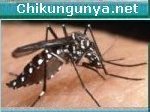On March 18th, I visited the International Conference of Emerging Infectious Diseases (ICEID 2008) in the Hyatts Regency Hotel, in Atlanta, GA. Even though I was only able to attend half a day of this conference, I felt that it was incredibly useful and highly worth the trip from Athens to Atlanta. In general, the meeting was very well organized, with several concurrent sessions in the morning. I was able to attend 3 sessions on arboviral disease.
At first, Thomas Monath from the Kleiner Perkins Caufield and Byers Pandemic and Biodefense Fund talked about the challenges and possible solutions of dengue control. Tom Monath has been a major force behind the development of dengue vaccines, personally working on the ChimeriVax dengue vaccine at Acambis. He gave a thorough introduction to dengue and then summarized the status of the dengue vaccines under development. He mentioned that there is a lot of genetic plasticity within dengue serotypes, which was unknown to me. Also, he acknowledged that there is a prolonged convalescence period even for dengue fever, characterized by weakness and fatigue, which is usually not included in the burden of disease studies. He featured a highly useful and intuitive diagram showing the variety of societal, economic, ecological and evolutionary components that lead to the increasing incidence and geographic range of dengue. In terms of the US, he acknowledged that dengue is present in south Texas, and has the potential to spread further north. On one of his maps, northern Argentina was shown to have Aedes aegypti, which I wasn't aware of either (although not surprising given the proximity of Paraguay and Brazil). He also warned about the widespread distribution of Aedes albopictus in the US, which is although less capable vector of dengue as Aedes aegypti is, could nonetheless drive an epidemic in Hawaii in 2001. He mentioned that Aedes albopictus might be present on the west coast of the US, however, this is not mentioned in the recent paper on the distribution of Aedes albopictus (although I might have misunderstood).
Thursday, March 20, 2008
Subscribe to:
Post Comments (Atom)













No comments:
Post a Comment